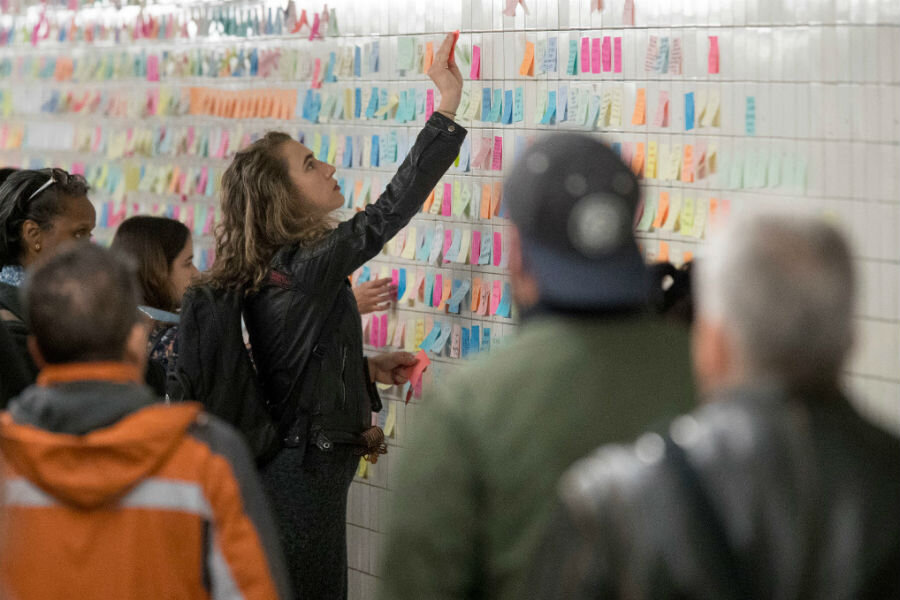Subway Therapy: Historical society to preserve New Yorkers' post-election notes
Loading...
As New Yorkers reacted to Donald Trump’s surprise victory over Hillary Clinton, one street artist gave them a way to come together. Now, their hope, fear, and uncertainty is being preserved as a window into this historic moment.
The day after the election, artist Matthew “Levee” Chavez brought sticky notes to the tunnel between the 14th Street stations in Manhattan. He offered passersby the opportunity to share their thoughts at this important moment. Over the weeks that followed, around 50,000 notes sprung up in subways around the city.
On Friday, New York Governor Andrew Cuomo announced that the notes will be removed from the subway, but a portion of them will be preserved as part of the New-York Historical Society’s History Responds Program. The Society maintains artifacts from seminal events that it believes will become part of the historical record. For Governor Cuomo, the defining message being preserved for future generations in these notes is one of unity – and the resilience of New Yorkers’ spirit.
"New Yorkers of all ages, races and religions came together to say we are one family, one community and we will not be torn apart," Cuomo said when he announced the preservation of the sticky notes, adding, "New York will always hold the torch high and our partnership with the Historical Society ensures that generations to come will see the moment when New Yorkers united in such a moving way."
The Society also maintains artifacts from informal memorials after events such as the September 11th attacks, the legalization of gay marriage, and Pope Francis’ visit to the city in 2015, according to the Wall Street Journal. What these events have in common, the society’s museum director, Margaret K. Hofer, told The New York Times, is the “same kind of spontaneous public outpouring of emotion.”
The emotional impact of the election on New Yorkers comes to life in the messages they left.
Some wrote of their confusion after President-elect Trump’s victory: “Woke up this morning and still can’t believe this world.” Others wrote of their children: “I don’t know how to talk to my 9-year-old, who is crying and upset all the time.” Still others left messages of resilience, such as “these notes give me hope.”
For Mr. Chavez, who began the project, it was a way for people to come together, understand others, and be comforted.
“‘Subway Therapy’ is about inclusion, stress relief and peaceful expression,” said Chavez in the governor’s press release.
And its impacts have been felt far beyond New York. Similar projects sprung up in Boston, San Francisco, Seattle, and Toronto. Chavez has also been asked to help international groups from London to Brussels, the Washington Post reports.
Next, Chavez hopes to take the project to other parts of the country, particularly areas more supportive of President-elect Trump's victory, in hopes of bringing together people who feel or have felt voiceless.
“Even if someone doesn’t believe their voice is important,” Chavez told the Washington Post, “I think it’s important.”
It seems “premature” to display “Subway Therapy” now, Ms. Hofer told The New York Times, but the form of the exhibition will be discussed in the future. Chavez also hopes to post many of the notes online for people across the globe to experience.
Though the notes are gone from subway walls, there’s still an opportunity to share. Until Inauguration Day, January 20, notes can be posted on the glass wall in the front entrance of the New-York Historical Society.








